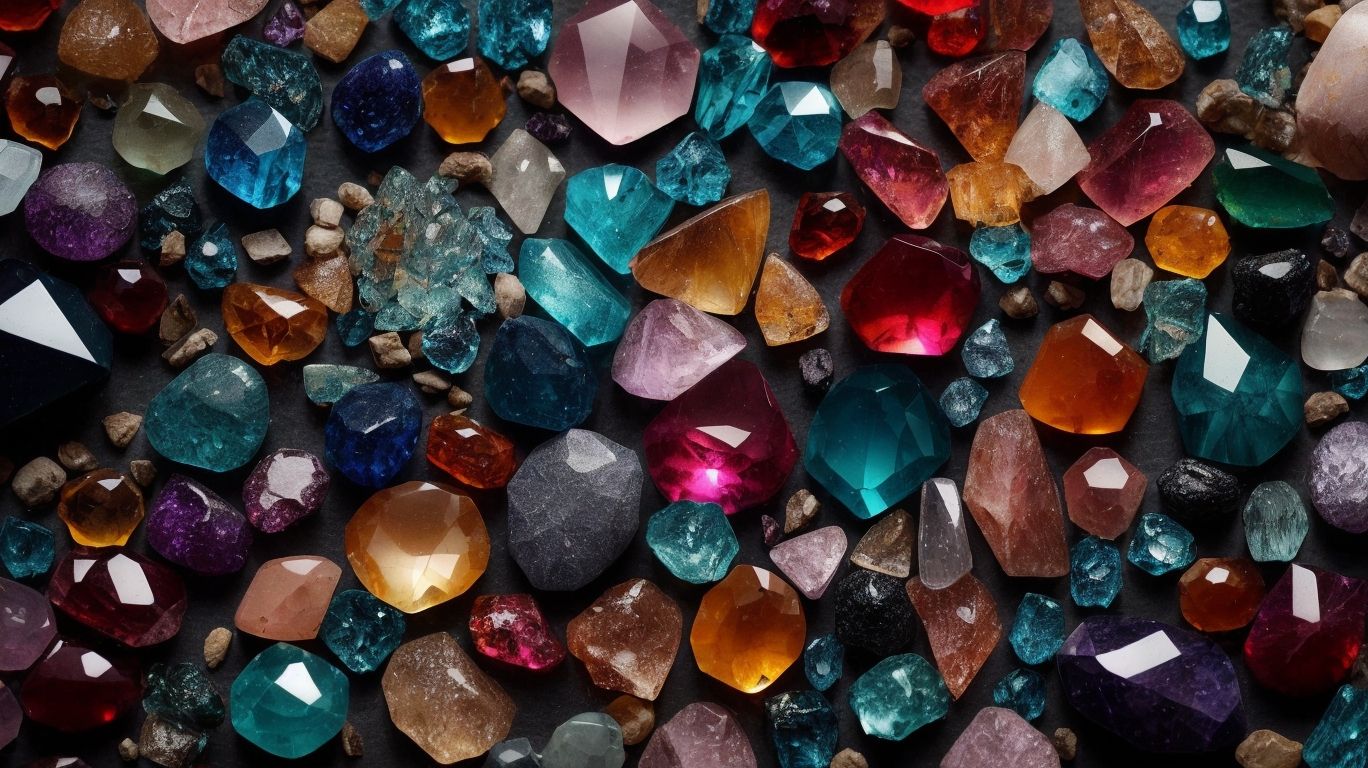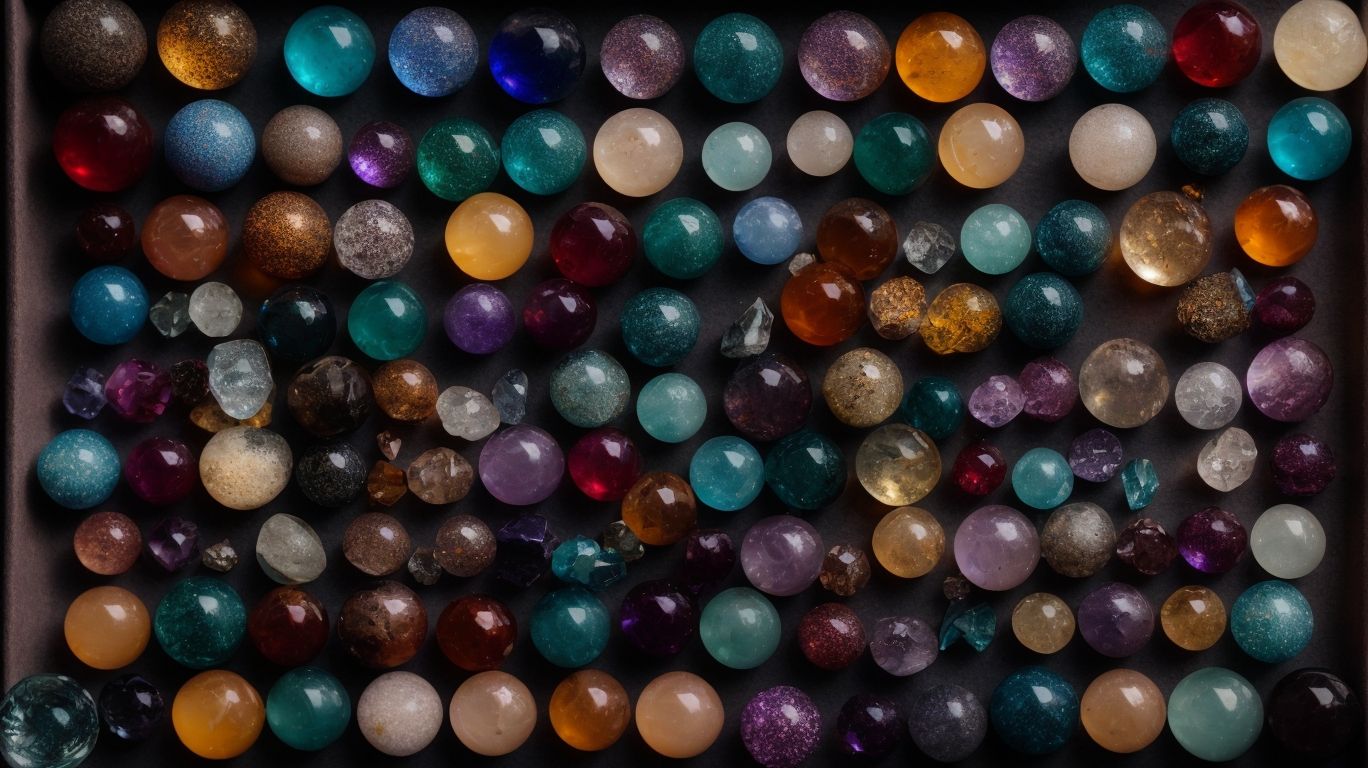
Discovering the World of Crystals: Exploring Various Types and Varieties
Welcome to the fascinating world of crystals, where the beauty and diversity of these natural formations have captivated human interest for centuries. In this comprehensive article, we will delve into the depths of what crystals are, their different types, formation processes, properties, and their wide-ranging uses. From the physical and chemical properties to their significant roles in technology and healing, we will explore the multifaceted nature of crystals.
We will take a closer look at some of the most popular types of crystals, including:
- quartz
- amethyst
- rose quartz
- citrine
- black tourmaline
- selenite
- fluorite
- obsidian
- lapis lazuli
- tiger’s eye
Join us on this intriguing journey as we unravel the mysteries of crystals and gain a deeper understanding of their significance in our world.
What Are Crystals?
Crystals are natural solid substances that are formed from various minerals and have a distinctive geometric shape.
These formations are the result of a process known as crystallization, which occurs when the atoms and molecules arrange themselves in a highly ordered and repeating pattern. Crystals come in a diverse range of types, including quartz, amethyst, and diamond, each with unique properties and characteristics.
Their geological significance extends to their ability to provide valuable insights into the Earth’s history and the conditions under which they were formed, making them crucial for the field of geology and mineralogy.
What Are The Different Types Of Crystals?
The different types of crystals encompass a wide range of formations, each characterized by unique crystallographic structures and mineral compositions.
These formations include:
- igneous crystals, which originate from volcanic activity
- sedimentary crystals, which form through the accumulation of materials over time
- metamorphic crystals, formed from the intense heat and pressure within the Earth’s crust
Crystallography reveals the internal arrangement of atoms within these structures, providing insights into their stability and properties.
Specimens of crystals hold significant value in scientific research, as their diverse formations offer valuable insights into the geological processes that shape our planet.
How Are Crystals Formed?
Crystals are formed through natural geological processes that involve the solidification of minerals under specific conditions, resulting in their characteristic shapes and formations.
These specific conditions include the presence of the right chemical components, temperature, and pressure. When these factors align, minerals organize themselves into repeating patterns, forming crystals. The process of crystal formation is often influenced by the slow cooling of molten rock, the evaporation of mineral-rich solutions, or the pressure changes in underground environments. Geological forces such as tectonic movements and volcanic activity play a crucial role in creating the environments where crystal formation can occur. Understanding these scientific principles provides valuable insights into the mesmerizing world of crystals.
What Are The Conditions Required For Crystal Formation?
The conditions required for crystal formation involve transparency, refraction, and often require detailed investigation and research to understand their intricate development.
These factors contribute to the unique properties and structures of crystals. Transparency allows light to pass through the crystal, affecting its appearance and color. Refraction, on the other hand, is responsible for the mesmerizing play of light within the crystal, creating a captivating visual spectacle.
In-depth investigation and research into crystal formation reveal the complexity of their growth and the impact of various environmental and chemical factors. Understanding these dynamics is crucial for harnessing the potential uses and benefits of crystals in various scientific and practical applications.
What Are The Properties Of Crystals?
The properties of crystals encompass a spectrum of colors and are influenced by their unique crystallographic structure, often exhibiting metaphysical properties that have fascinated individuals for centuries.
These mesmerizing gemstones can vary in color from vivid blues and greens to soothing pinks and purples, evoking a sense of wonder and awe. Their diverse crystallographic structures, such as hexagonal, cubic, and orthorhombic, contribute to their individualistic nature.
The enduring allure of their metaphysical properties, including their ability to balance energy, promote healing, and enhance spiritual growth, has led to their widespread use in alternative healing therapies and spiritual practices.
What Are The Physical Properties Of Crystals?
The physical properties of crystals encompass their hardness, cleavage, and various optical characteristics, often studied through the lens of mineralogy and rigorous investigation and research.
These properties are crucial in understanding the internal structure and behavior of crystals. Hardness, measured using the Mohs scale, provides valuable insights into the resistance of a crystal to scratches and abrasion. Cleavage refers to the way a crystal breaks along certain planes, revealing its internal structure. Optical attributes such as refraction and birefringence enable scientists to analyze how light interacts with crystals, shedding light on their distinct properties.
What Are The Chemical Properties Of Crystals?
The chemical properties of crystals are intricately studied by crystallographers through meticulous investigation and research, delving into their atomic structure, composition, and bonding characteristics.
Understanding the atomic structure of crystals is crucial for comprehending their unique properties. Crystallographers analyze the arrangement of atoms within a crystal lattice, determining the spatial arrangement and symmetry of the crystalline structure. This in-depth exploration enables the identification of various bonding characteristics, including ionic, covalent, or metallic bonding, which greatly influence the physical and chemical traits of crystals.
What Are The Uses Of Crystals?
Crystals serve diverse purposes, being utilized in technology for their unique properties and also in healing practices due to their metaphysical properties that are believed to promote well-being.
These remarkable minerals have captivated the interest of scientists and engineers due to their ability to transmit and store energy, making them invaluable in electronic devices like smartphones and computers. Their metaphysical properties have sparked a growing interest in utilizing crystals for healing, aligning chakras, and promoting emotional and physical balance. The combination of their technological and metaphysical applications highlights the intricate and multi-dimensional nature of crystals in our modern world.
How Are Crystals Used In Technology?
Crystals are extensively used in technology for their ability to harness and transmit energy, a principle deeply rooted in crystallography and ongoing scientific investigation to maximize their potential applications.
These versatile materials are employed in various technological applications such as lasers, semiconductors, solar panels, and communication systems, where their unique properties play a crucial role in enhancing efficiency. Scientists are actively exploring ways to optimize the use of crystals in energy storage, quantum computing, and telecommunications, aiming to unlock their full potential for sustainable energy solutions and advanced information processing.
The ongoing research and development in crystal technology hold promising prospects for revolutionizing various industries and addressing contemporary challenges.
How Are Crystals Used In Healing?
Crystals are employed in healing practices to facilitate meditation, balance energy, and align chakras, drawing from their perceived metaphysical properties that are thought to enhance spiritual well-being.
These beautiful natural formations are believed to emit unique frequencies that interact with the body’s energy field, promoting feelings of tranquility and harmony. By incorporating specific crystals into meditation practices, individuals seek to deepen their spiritual connection and reach a state of heightened awareness.
Many practitioners also use crystals to cleanse and balance the chakras, which are energy centers within the body, aiming to restore a sense of balance and vitality to the mind, body, and spirit.
What Are The Popular Types Of Crystals?
Several types of crystals have gained popularity, including:
- Quartz, known for its ability to amplify energy and clarity of thought, is a widely used crystal in healing practices.
- Amethyst, with its calming and protective properties, is favored for promoting emotional balance and tranquility.
- Citrine, often referred to as the ‘merchant’s stone’, is believed to bring prosperity and abundance.
- Tourmaline, valued for its grounding and protective qualities, is thought to cleanse, purify, and transform dense energy.
- Selenite, a delicate crystal known for its cleansing and charging abilities, is highly regarded for its connection to the divine.
- Moonstone, associated with feminine energy and intuition, is believed to enhance spiritual growth and insight.
- Obsidian, with its grounding and protective properties, is often used for shielding against negativity and promoting inner strength.
Quartz Crystals
Quartz crystals are renowned for their diverse formations and intricate crystal lattice structures, showcasing a remarkable range of shapes and optical properties.
These crystals can be found in various shapes such as prismatic, tabular, and even double-terminated formations, each with its distinct properties. Their crystal lattice structure, consisting of silicon and oxygen atoms, contributes to their unique optical characteristics, including transparency, translucency, and even iridescence, captivating the eye with their mesmerizing beauty. Whether as natural points, clusters, or geodes, quartz crystals never cease to fascinate with their stunning diversity and inherent allure.
Amethyst Crystals
Amethyst crystals are prized for their mesmerizing colors, metaphysical properties, and intricate crystal formations, inviting profound investigation into their unique attributes and allure.
The rich hues of amethyst, ranging from deep purples to delicate lilacs, have long been associated with spiritual enlightenment and higher consciousness. Many believe that amethyst can provide clarity of mind and promote a sense of calm and peace.
The intricate and symmetrical formations of amethyst crystals add to their mystique, reflecting the profound beauty of the natural world and inspiring wonder in those who behold them.
Rose Quartz Crystals
Rose quartz crystals are associated with love, compassion, and positive energy, making them cherished elements in crystal therapy and spiritual practices that prioritize emotional well-being.
Their gentle, soothing energy is believed to open the heart chakra, promoting emotional healing, forgiveness, and self-love. It is widely used to attract love and harmonious relationships, dissolve emotional wounds, and inspire a sense of inner peace. In crystal therapy, rose quartz is often placed near the heart to enhance its healing effects.
This beautiful pink crystal also holds a deep spiritual significance, symbolizing unconditional love and inner tranquility, making it a powerful tool for those seeking balance and emotional healing in their spiritual journey.
Citrine Crystals
Citrine crystals are revered for their associations with abundance, prosperity, and the balancing of chakras, often incorporated into crystal jewelry and decor to promote positive energies.
Their warm, golden hues are said to resonate with the energy of the sun, infusing the environment with positivity and joy. Citrine is believed to facilitate the flow of abundance and attract wealth, making it a popular choice for those seeking financial prosperity. It is associated with the solar plexus chakra, aiding in boosting self-confidence and promoting inner strength.
People often turn to citrine crystals for a touch of elegance in jewelry or decorative pieces, harnessing their spiritual symbolism for a harmonious and vibrant ambiance.
Black Tourmaline Crystals
Black tourmaline crystals are esteemed for their protective and grounding properties, often utilized in crystal cleansing rituals to dispel negative energies and promote spiritual balance.
These intriguing crystals are believed to act as a shield against psychic attacks and EMF radiation, creating a protective barrier around the user. Black tourmaline is said to aid in grounding and connecting with the Earth’s energy, providing a sense of stability and security. Many people also use black tourmaline to purify and cleanse their other crystals, harnessing its innate ability to neutralize and transmute negative energies, making it a valuable tool for maintaining spiritual equilibrium.
Selenite Crystals
Selenite crystals are revered for their association with clarity and purification, often utilized for crystal charging to amplify positive energies and spiritual resonance.
They are believed to have the ability to cleanse and clear the energy of other crystals, making them an essential tool for anyone working with crystal healing or energy practices. Selenite is associated with the crown chakra, promoting spiritual growth and insight, and is often used to create a peaceful and harmonious environment. Its pure white appearance reflects its association with purity and protection, making it a popular choice for meditation and spiritual work.
Fluorite Crystals
Fluorite crystals are associated with enhancing focus and concentration, often used in crystal decor to create harmonious environments conducive to mental clarity.
Their soothing and calming energy makes them ideal for promoting a more peaceful and tranquil environment, and their vibrant colors add a touch of natural beauty to any space. The unique composition of fluorite crystals enables them to absorb and neutralize negative energies, promoting a sense of balance and stability. When strategically placed in living or work areas, fluorite crystals can serve as gentle reminders to stay focused, aiding in mental organization and decision-making. Their presence can contribute to an overall sense of well-being and cognitive function in the surroundings.
Obsidian Crystals
Obsidian crystals are valued for their grounding and protective qualities, often found in crystal geodes that symbolize inner strength and shield against negative influences.
When using obsidian crystals for spiritual practices, many believe that they provide a sense of stability and courage, aiding in the release of past traumas and promoting emotional resilience. The deep, dark color of obsidian is thought to absorb and transmute negative energy, making it an ideal crystal for protection and grounding. It is also associated with the root chakra, known for its connection to earth energy and providing a sense of security and stability.
Lapis Lazuli Crystals
Lapis lazuli crystals are associated with wisdom and truth, often seen in crystal clusters that embody the pursuit of knowledge and the revelation of inner truths.
They are believed to promote intellectual abilities and enhance one’s desire for learning, making them ideal companions for students, scholars, and those seeking to deepen their understanding of the world.
Lapis lazuli’s deep blue hues reflect the depth of knowledge and the vast mysteries waiting to be unveiled, serving as a reminder to stay curious and open-minded. It is also revered for its connection to the throat chakra, encouraging effective communication and expression of higher truths.
10. Tiger’s Eye Crystals
Tiger’s eye crystals are renowned for their protective and courageous energies, often fashioned into crystal wands that symbolize resilience and empowerment in the face of challenges.
The distinct golden-brown hue of tiger’s eye crystals is associated with both the solar plexus and sacral chakras, facilitating a strong connection to one’s personal power and creativity. These crystals are believed to offer a sense of stability and mental clarity, making them popular choices for those seeking to bolster their inner strength.
When used in the form of crystal wands, tiger’s eye crystals are thought to amplify their healing properties, making them essential tools for channeling positive energy and overcoming obstacles.




No Comments